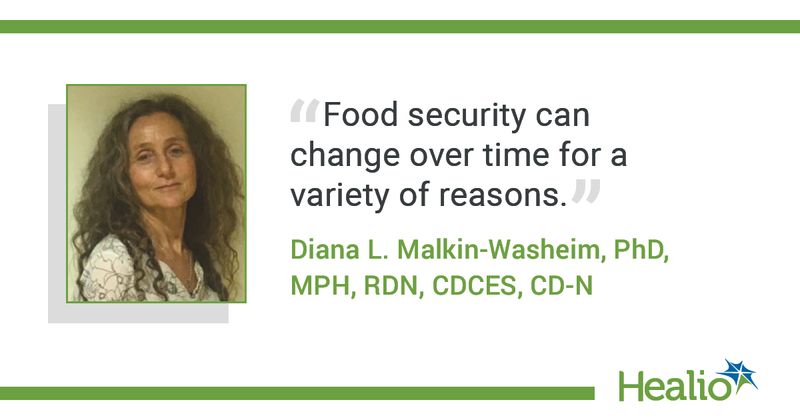Screening for food insecurity is always critical, especially during COVID-19 pandemic
The COVID-19 pandemic has caused unforeseen stresses to individuals and businesses.
More specifically, food insecurity has affected people who were suddenly furloughed, and it caused further strain among those who were already unemployed and had limited income. Although the Supplemental Nutrition Assistance Program (SNAP) in New York increased its surplus, it has not been enough to sustain families; hence, multiple organizations have stepped in to offer emergency food delivery options to families. These include but are not limited to God’s Love We Deliver; the GetFoodNYC Emergency Home Food Delivery program, which provides free food delivery; food pantries; churches that supply meals; emergency shelters; and Meals on Wheels.

There are ranges of food security and insecurity. The United States Department of Agriculture provides the following definitions:
- high food security: no reported indications of food-access problems or limitations.
- marginal food security: one or two reported indications in which there is anxiety over food sufficiency or shortage of food in the house, and little or no indication of changes in diets or food intake;
- food insecurity: reports of reduced quality, variety or desirability of diet, and there is little or no indication of reduced food intake; and
- very low food security: reports of multiple indications of disrupted eating patterns and reduced food intake.
To explore food security status among our population, two validated screening questions have been implemented in our electronic medical record. In 2018, Radandt and colleagues demonstrated that the two-item food security screening questions had a sensitivity of 95.4% and a specificity of 83.5%, providing a quick and accurate method to identify food-insecure families. The two questions included, 1) “We worried whether our food would run out before we got money to buy more”; and 2) “The food we bought just didn’t last and we didn’t have money to get more.”
The choices for either query are, “often true,” “sometimes true” or “never true” in the past 12 months, or “Don’t know.” A positive response to either question determines food insecurity in the household. Following a positive answer, a pop-up window in our EMR reminds the health care provider to offer various supplemental food interventions. These include providing food pantry lists; offering fliers for a food assistance truck once per week outside of the hospital; contacting the New York City emergency free food delivery service; informing clients of food pantry availability; providing “Health Bucks,” which are $2 coupons to purchase produce at a farmer’s market; and applying for God’s Love We Deliver, the food assistance program.
During every patient encounter — whether an initial visit and/or a follow-up — the two screening questions are addressed since food security status is transient. Food security can change over time for a variety of reasons, such as employment status, housing (rental or living in a shelter) or participating in a federally subsidized food program such as SNAP. In addition to offering supplemental food interventions, the EMR tracks whether the client received food assistance, regarding the type of intervention and the date it was received.
As an added intervention, we made it mandatory to complete the initial and/or follow-up food security queries, otherwise the provider cannot save the medical note. This reinforces the tracking of food security. Currently, these data are in the diabetes educator assessment document; however, the goal is to roll out these tracking questions in the medical assessment documents of clinical social workers and primary care physicians.
By implementing the two validated food security queries and adding follow-up questions, it is simple to track, validate and identify the incidence or prevalence of food insecurity in a specific population. These data can justify resources for any program and aid with grant proposals.
References:
God’s Love We Deliver. https://www.glwd.org/. Accessed January 26, 2021.
Meals on Wheels America. https://www.mealsonwheelsamerica.org/. Accessed January 26, 2021.
nyc.gov. GetFoodNYC COVID-19 Emergency Food Distribution. https://www1.nyc.gov/assets/dsny/contact/services/COVID-19FoodAssistance.shtml. Accessed January 26, 2021.
Radandt NE, et al. J Dent Child (Chic). 2018;85:114-119.
USDA Economic Research Service. Definitions of food security. https://www.ers.usda.gov/topics/food-nutrition-assistance/food-security-in-the-us/definitions-of-food-security/. Accessed January 25, 2021.

